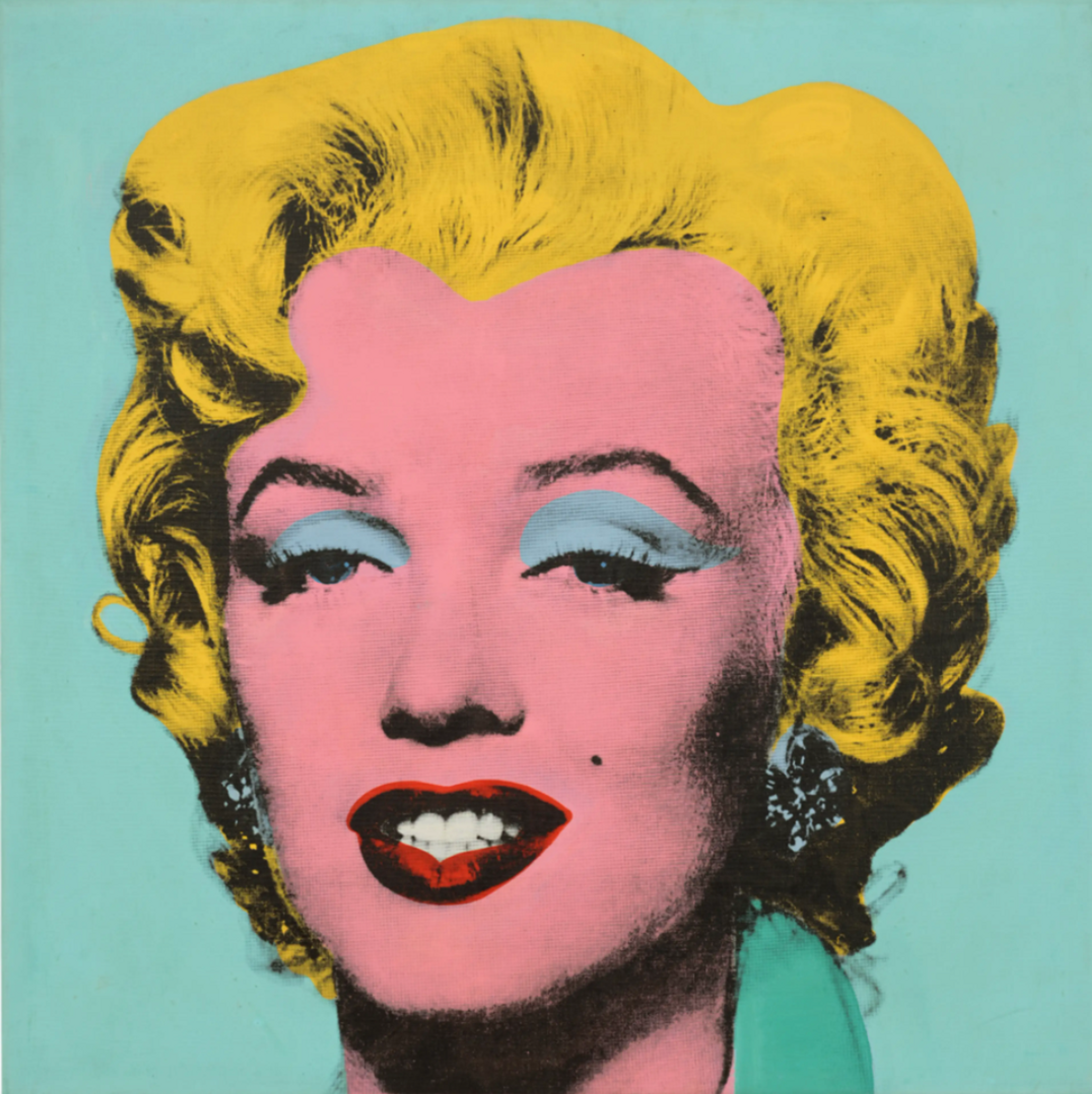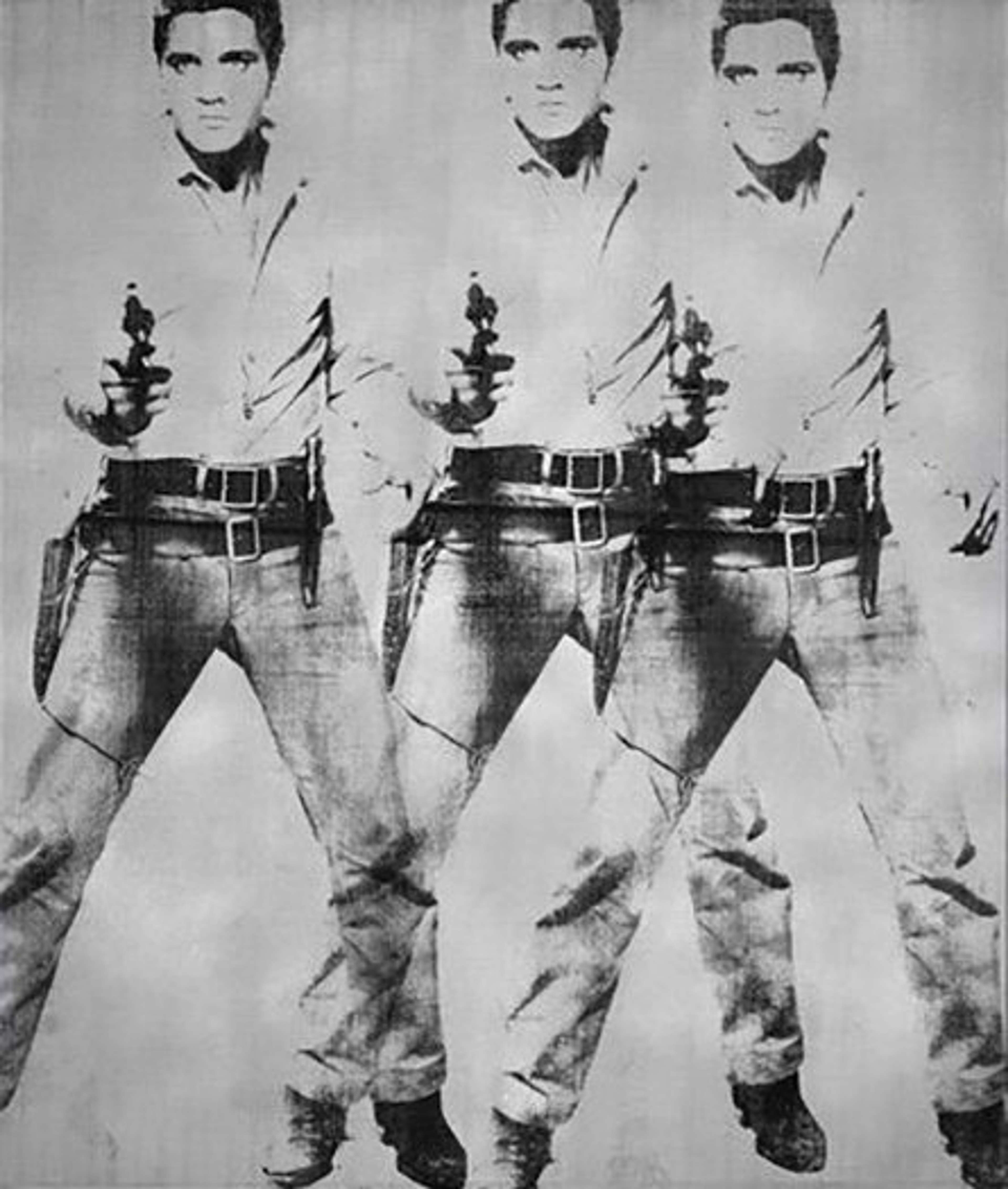 Details Of Renaissance Paintings (Sandro Botticelli, Birth Of Venus 1482, F & S 11.319) © Andy Warhol 1984
Details Of Renaissance Paintings (Sandro Botticelli, Birth Of Venus 1482, F & S 11.319) © Andy Warhol 1984
Interested in buying or selling
Andy Warhol?

Andy Warhol
487 works
Andy Warhol's art market remains one of the most lucrative of blue chip artists, consistently featuring high-value paintings across different periods in every major auction. As the art market landscape shifts towards different mediums in 2024, there's growing interest in Warhol's prints, particularly Trial Proofs and Complete Sets. Works that are now regularly included in marquee evening sales alongside originals, reflecting their demand and significant value. The following list showcases the top prices achieved for Warhol's artworks at auction.
£157.9M for Shot Sage Blue Marilyn
($195,040,000 USD)
 Shot Sage Blue Marilyn © Andy Warhol 1964
Shot Sage Blue Marilyn © Andy Warhol 1964In May 2022, Warhol's Shot Sage Blue Marilyn (1964) sold for $195 million USD (£158 million GBP) at Christie’s New York, becoming the most expensive 20th-century artwork ever sold. This iconic piece features Marilyn Monroe, embodying Warhol's fascination with celebrity culture. The work's notoriety is further amplified by its history–one of five pieces shot by performance artist Dorothy Podmer in 1964. Despite being repaired, this screenprint remains a testament to Warhol's enduring influence and the high value placed on his work in today's art market.
£71.8M for White Disaster (White Car Crash 19 Times)
($85,350,500 USD)
 Image Sotheby's / White Disaster (White Car Crash 19 Times) Andy Warhol 1963
Image Sotheby's / White Disaster (White Car Crash 19 Times) Andy Warhol 1963Following the record-breaking sale of Shot Sage Blue Marilyn in the May sales, Warhol's White Disaster (White Car Crash 19 Times) (1963) was featured in Sotheby's November 2022 Contemporary Evening Auction. This work, part of Warhol's acclaimed Death and Disaster series, had a rich provenance, first appearing at auction in 1987 and then held in various private collections. This sale marked its first public appearance in 15 years. The painting achieved an impressive £71 million, contributing significantly to the strong overall performance of the art market in 2022.
£66.2M for Silver Car Crash (Double Disaster)
($105,400,00 USD)
Warhol's Silver Car Crash (Double Disaster), part of his Death and Disaster series, achieved a top auction price at Sotheby’s in 2013. This powerful work reflects on themes of tragedy and history, echoing the tradition of iconic paintings like Géricault’s The Raft of the Medusa and Pablo Picasso’s Guernica. Created in 1963, a pivotal year for Warhol, the piece depicts a repeated, silvery image of a car crash, transforming a tragic event into a cinematic sequence. This work exemplifies Warhol's exploration of mortality and mass media.
£51.6M for Triple Elvis [Ferus Type]
($81,925,000 USD)
 Triple Elvis [Ferus Type] © Andy Warhol 1963
Triple Elvis [Ferus Type] © Andy Warhol 1963After transforming Marilyn Monroe’s image into countless silkscreen prints, it was natural for Warhol to turn his attention to Elvis Presley in Triple Elvis (Ferus Type) (1963). This painting features a repeated, life-sized depiction of Elvis in a dramatic cowboy stance, drawing his pistol. The repetition gives the piece a cinematic quality, elevating Elvis, the King of rock n' roll, from pop icon to a near-mythical figure. The silver background evokes both the Hollywood screen and the ornate aesthetics of the Catholic Church, Warhol visited as a child. This work fetched £51.6 million at Christie’s in November 2014 and remains one of his highest valued pieces.
£46.2M for Sixty Last Suppers
($60,875,000 USD)
 Sixty Last Suppers © Andy Warhol 1986
Sixty Last Suppers © Andy Warhol 1986Sixty Last Suppers (1986) was painted in the final year of Warhol’s life and reflects his enduring fascination with old masters. Alongside works like The Last Supper (Pink) and The Camouflage Last Supper, this piece was based on a 19th-century reproduction of Leonardo da Vinci’s original. Warhol's silkscreen technique transforms the 16th-century masterpiece into a monumental grid of repeated images, placing his work in conversation with Western art history. Additionally, Warhol’s Catholic roots may have influenced his exploration of the value of singular versus repeated images. This work realised £46.2 million in November 2017.
Painted in the last year of Warhol’s life, Sixty Last Suppers is testament to the artist’s enduring love for the old masters. That year Warhol also produced The Last Supper (Pink) and The Camouflage Last Supper which along with the current work were based on reproductions of a 19th century copy of the original painting by Leonardo da Vinci.
By applying his silkscreen technique to a 16th century masterpiece and reproducing it into a monumental grid of repeated images, Warhol placed his work in dialogue with the Western art historical canon that came before him. In addition, this was Warhol referencing his own roots in the catholic church and perhaps questioning the value of a single image over many.
£43.9M for Four Marlons
($69,605,000 USD)
 Four Marlons © Andy Warhol 1966
Four Marlons © Andy Warhol 1966In Four Marlons (1966), Warhol continues his exploration of celebrity culture by featuring Marlon Brando as depicted in the 1950s film The Wild One, where Brando played the iconic leader of a rebellious motorcycle gang. Unlike his earlier works, Warhol prints Brando's image onto unprimed canvas, avoiding bright colours or backgrounds to let Brando's raw charisma stand out. Created in 1966, this piece reflects Warhol's peak creativity, where he used silkscreen techniques to draw from advertising and Hollywood, forging a new style that defied traditional art norms. This innovative approach would solidify Warhol's own status as an icon, paralleling the fame of his subjects. Four Marlons achieved £43.8 million at Christie's in November 2014.
£41.2M for Double Elvis [Ferus Type]
($53,000,000 USD)
![Double Elvis [Ferus Type] by Andy Warhol - MyArtBroker](https://cdn.sanity.io/images/dqllnil6/production/11e194a043312cf27a8f622ad57476f8e08a63d1-337x525.jpg?w=3840&q=60&auto=format) Double Elvis [Ferus Type] © Andy Warhol 1963
Double Elvis [Ferus Type] © Andy Warhol 1963Painted in 1963, the same year as Triple Elvis, Warhol's Double Elvis [Ferus Type] sold for an impressive £41.2 million, although it garnered slightly less than its counterpart. This life-size double portrait captures Elvis Presley in a gunslinger pose from the 1960 Western drama Flaming Star, in which he starred.The piece captures Warhol's deep fascination with celebrity culture and American icons, portraying the cowboy as both romantic and heroic. Double Elvis remains a significant work in Warhol's artistic legacy, showcasing his enduring exploration of fame and popular culture.
£39.2M for Men In Her Life
($63,362,500 USD)
 Men In Her Life © Andy Warhol 1962
Men In Her Life © Andy Warhol 1962Men In Her Life (1962), sold for over £39.1 million at Phillips in 2010 and pays tribute to Hollywood actress Elizabeth Taylor and the American public's obsession with her personal life. Warhol uses an image from LIFE magazine depicting Taylor with her third husband, Mike Todd, alongside other prominent Hollywood figures Debbie Reynolds and Eddie Fisher. While the Warhol's image appears to depict romance and friendship, it foreshadows the complicated love affair that led to Taylor being vilified by the media. Warhol's repetition of the motif adds movement, while the black-and-white palette contrasts with his usual vibrantly coloured canvasses prominent in the same year.
£37.3M for Race Riot
($62,885,000 USD)
 Race Riot © Andy Warhol 1964
Race Riot © Andy Warhol 1964One of Warhol's more politically charged works, Race Riot (1964) reproduces a photograph from a 1963 civil rights march in Birmingham, Alabama. The protest, aimed at opposing segregation laws, turned violent when police unleashed attack dogs and fire hoses on the demonstrators. The shocking images, captured by photographer Charles Moore, made headlines worldwide, pressuring President John F. Kennedy to enact historic legal reforms. Warhol's reproduction of these images not only immortalises this moment of injustice but also cements its significance in art history, the ethos behind all of his work. Race Riot sold for £37.2 million in May 2014.
£36.2M for Green Car Crash (Green Burning Car 1)
($71,720,000 USD)
 Green Car Crash (Green Burning Car I) © Andy Warhol 1963
Green Car Crash (Green Burning Car I) © Andy Warhol 1963Another significant piece from Warhol’s Death and Disaster series, Green Car Crash (Green Burning Car I) (1963) made headlines when it sold for £36.2 million at Christie’s in 2007, an impressive figure in the art market for that year. In this work, Warhol uses repetition to transform a tragic scene into an iconic Pop Art piece, employing his signature silkscreen technique to repeatedly reproduce a newsreel image until its impact diminishes. Warhol noted, “When you see a gruesome image over and over again, it really doesn’t have any effect,” a sentiment eerily relevant in today’s 24-hour news cycle.

